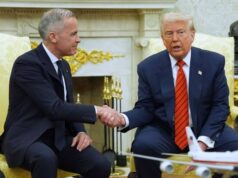The US-China Byte Dance Now Faltering Badly

The Ministers from United States and China met in Alaska to ‘reset’ their bilateral relationship gone haywire. Antony Blinken, the American Secretary of State read out a series of charges including removal of democracy in Hong Kong, planning annexation of Taiwan, persecution of Uighurs, cyber attacks and economic coercion against various countries. China’s top minister Yang Jeichi responded in similar manner accusing the USA of various misdeeds. He warned the US to not “meddle in the internal affairs of China” and challenged the US global stature stating “the US does not represent the world; it only represents the government of the United States”.
The past, It seems has now caught up with United States. It is now fighting to contain its self created monster. 50 years ago, in order to push down USSR, the Nixon doctrine had ended the isolation of communist China. In 1954, at the Geneva Conference, US Secretary of State John Foster Dulles had refused to shake hands with Zhou En Lai. By 1971, Henry Kissinger seeking the help of the notorious Nicolae Ceausescu and dictator Yahya Khan, befriended Zhou En Lai and paved the way for the ‘leader of the free world’ to hug China under Mao.
Thus the United States helped of China become a veto-wielding member of the UN Security Council in 1971, opened trade and investment flows into communist China, ushered the most favoured nation status in 1979, left Taiwan in the lurch under the “three no’s policy”, goaded the transfer of Hong Kong from Britain via a bill authored by Mitch McConnell, and shepherded its membership into the World Trade Oraganzation in 2001.
China prospered with the opportunity given. Since 1971 China’s GDP has shot up from USD 99 billion to over USD 15 trillion. Its defence budget at over USD 200 billion is second only to that of the United States. It’s the largest recipient of FDI – USD 140 plus billion last year. It is the largest trading partner for the largest economies, is the world’s biggest exporter at USD 2.5 trillion dollars, boasts of foreign exchange reserves of over USD 3.2 trillion dollars and owns USD 1.09 trillion worth of US treasury bonds. The boon delivered 50 years ago has come to haunt the United States.
The US-China byte dance, the ricocheting rude rhetoric presents a challenge – and a long-term opportunity for India. The unalloyed fact of geopolitics is that there is scarcely an economy which can decouple from either China or the United States.
However now has stepped in a India on the World Stage as a game changer. India’s construct of strategic autonomy is grounded in a geographic reality and pragmatic ideology. India’s biggest trading partners are US and China and the economic interdependency is complex and rests on cost efficiencies.
The reality of over dependence on China has dawned across the World and now there is a shift of dependencies outside of China. Indeed, there is no disputing that since the pandemic USD 4 trillion global trade is seen shifting supply base by 2025.
Think Japan, think Korea, think manufacturing. There is also the contingency factor – countries would seek avenues to insulate their economies from any shocks that could follow intended and unintended consequences.
India as the largest democracy with a large domestic market, demography which supports flow of skills and labour is now being seen as the alternative. With supply of Vaccine to more than half of the World India has already demonstrated its potential.




